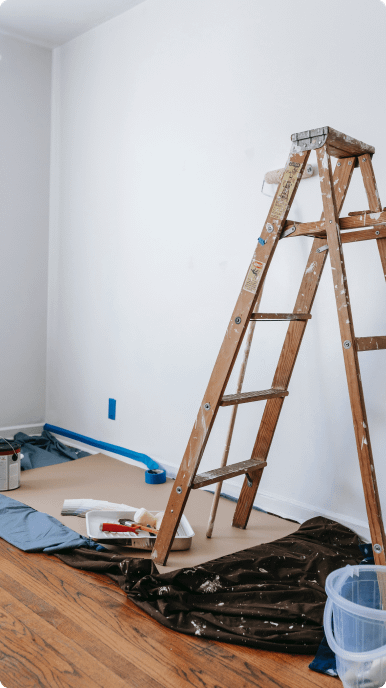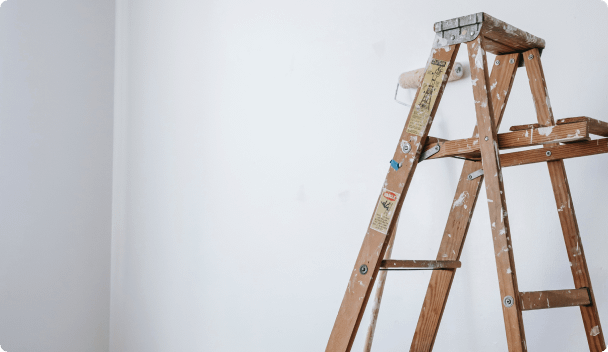A well-maintained commercial space speaks volumes about a business’s professionalism and attention to detail. One of the most effective ways to keep your premises looking sharp and inviting is through a regular commercial painting schedule. Beyond aesthetics, routine painting protects your property, enhances employee morale, and leaves a lasting impression on clients. This blog explores why businesses should prioritize painting maintenance and how to set up an effective plan to ensure their spaces remain pristine.
Why Regular Commercial Painting Matters
1. First Impressions Count
Your business premises are often the first point of contact for clients, partners, and potential employees. Peeling paint, faded colors, or scuffed walls can signal neglect, undermining your brand’s credibility. A fresh coat of paint instantly elevates your space, conveying professionalism and care. Regular painting ensures your property always looks its best, reinforcing a positive image.
2. Protects Your Investment
Commercial properties are significant investments, and protecting them is crucial. Paint acts as a barrier against environmental factors like moisture, UV rays, and temperature fluctuations, which can damage walls, wood, and metal surfaces. Routine painting prevents costly repairs by addressing wear and tear before it escalates, extending the lifespan of your building’s exterior and interior surfaces.
3. Boosts Employee Productivity and Morale
A well-maintained workspace directly impacts employee satisfaction. Dull, outdated, or damaged interiors can create a lackluster environment, while vibrant, clean spaces inspire creativity and productivity. Regular painting, paired with modern color schemes, can transform your office into a motivating hub that employees are proud to work in.
4. Maintains Compliance and Safety
Certain industries, such as healthcare or food service, have strict regulations regarding cleanliness and maintenance. Regular painting ensures your facility meets these standards, avoiding potential fines or operational disruptions. Additionally, using high-quality, low-VOC (volatile organic compound) paints promotes a healthier indoor environment for staff and visitors.
5. Enhances Property Value
Whether you own or lease your commercial space, maintaining its appearance increases its marketability. A freshly painted building is more appealing to prospective buyers or tenants, potentially increasing its value. Regular upkeep signals that the property has been cared for, making it a more attractive investment.
How to Set Up a Commercial Painting Maintenance Plan
Creating a proactive painting schedule keeps your business looking polished without the hassle of last-minute fixes. Here’s a step-by-step guide to setting up an effective maintenance plan:
1. Assess Your Property’s Needs
Start by evaluating your building’s interior and exterior surfaces. Consider factors like:
- Location and Weather: Properties in coastal or humid areas may require more frequent painting due to moisture exposure.
- Foot Traffic: High-traffic areas like lobbies or hallways show wear faster and may need touch-ups more often.
- Material Types: Different surfaces (e.g., drywall, brick, or metal) have varying maintenance needs. Work with a professional painting contractor to conduct a thorough inspection and identify priority areas.
2. Establish a Painting Schedule
Based on your assessment, create a timeline for painting projects. A general guideline is:
- Exterior Painting: Every 3–7 years, depending on climate and material (e.g., wood siding may need repainting every 3–5 years, while brick can last longer).
- Interior Painting: Every 5–10 years for low-traffic areas like offices, or every 2–3 years for high-traffic spaces like retail stores or restaurants.
- Touch-Ups: Schedule annual or bi-annual touch-ups for scuffs, stains, or minor damage in high-use areas. Adjust the schedule based on your industry, budget, and aesthetic goals.
3. Choose the Right Paint and Professionals
Selecting high-quality paint is critical for durability and appearance. Opt for:
- Low-VOC or Zero-VOC Paints: These are eco-friendly and reduce indoor air pollution.
- Specialty Coatings: For example, anti-microbial paints for healthcare facilities or weather-resistant coatings for exteriors. Hire experienced commercial painters who understand your industry’s needs and can minimize disruptions. Verify their credentials, insurance, and references before signing a contract.
4. Budget for Regular Maintenance
Incorporate painting costs into your annual maintenance budget. While upfront costs may seem significant, regular painting prevents expensive repairs and boosts long-term savings. Request quotes from multiple contractors to ensure competitive pricing, and consider multi-year contracts for predictable expenses.
5. Plan for Minimal Disruption
Painting projects can disrupt daily operations, so schedule work during off-hours, weekends, or slower business periods. Professional painters can often work in phases, allowing your business to remain operational. Communicate the schedule to employees and clients in advance to manage expectations.
6. Monitor and Adjust the Plan
Regularly inspect your property to ensure the painting schedule meets your needs. If certain areas show wear faster than expected, adjust the frequency of touch-ups or repainting. Keep a maintenance log to track painting dates, costs, and contractor details for future reference.
Tips for Maximizing Your Painting Investment
- Choose Timeless Colors: Neutral or classic color palettes ensure your space remains stylish and versatile, reducing the need for frequent repainting.
- Prioritize High-Impact Areas: Focus on entrances, lobbies, and conference rooms where clients and visitors form their first impressions.
- Incorporate Branding: Use your brand’s colors or logo in key areas to reinforce your identity without overhauling the entire space.
- Combine Projects: Pair painting with other maintenance tasks, like cleaning or repairs, to save time and money.
Conclusion
Regular commercial painting is more than a cosmetic upgrade, it’s a strategic investment in your business’s image, property value, and workplace environment. By establishing a proactive maintenance plan, you can keep your premises looking professional, protect your assets, and create a welcoming space for employees and clients. Start by assessing your property’s needs, setting a realistic schedule, and partnering with trusted professionals to bring your vision to life.
Ready to refresh your commercial space? Contact Allegiant Painting today to create a tailored maintenance plan that keeps your business shining year-round.


